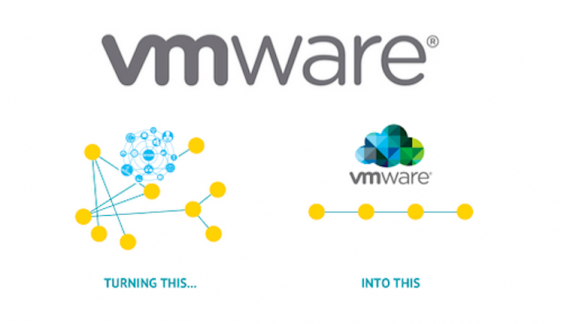by Christopher Janoch
While giving a presentation on VMware end user computing at a client last week, I was challenged by the CIO who stated: “I don’t believe that virtual desktops are a viable solution for more than 20 percent of my workforce.” Frankly, I couldn’t agree more!
While there are several use cases that can be answered by a virtualized Windows desktop environment (such as overseas development, call centers, or help desk support), the idea that virtual desktop infrastructure (VDI) is the ultimate solution to end user computing is a naive one rooted in the past. Today’s workers require agility and flexibility – broad access to corporate services, applications and documents from a variety of devices and locations, in a secure and manageable environment.
Speaking as a road warrior myself, I find that much of my work today can be successfully performed using a light-weight tablet – as opposed to my heavier Windows laptop complete with spare batteries, cables and accessories. And when I purchased my tablet, I chose it for the simplicity, stability and flexibility that comes with a hardened OS and standardized user interface. It defeats the purpose for me to remotely access a virtual Windows desktop and utilize an imaginary mouse to access the services and data I need to work with.
So what do our end users really desire in a modern computing environment? Access to all applications, services and data; from anywhere at any time; securely and reliably; using whatever device they choose – in that device’s native format. Simple to say – not that simple to deliver.
The thing that our IT departments and service centers need to realize is that the desired destination is access to applications and data, not Microsoft operating systems. A Windows desktop environment is nothing more than an application delivery system. As such, it can and should be replaced as soon as a better delivery system can be provided. The key to the future is cloud-based apps, SaaS-based apps, self-contained apps and virtualized apps that are OS, platform and device agnostic. The true workspace of the future involves the decoupling of applications and data from the device environment, and we are already seeing it in action, TODAY.
VMware and EMC’s new venture, the Pivotal Initiative promises to unify EMC’s Greenplum, VMware’s vFabric (including Spring and Gemfire), Cloud Foundry and Cetas organizations to deliver the tools necessary to design new enterprise applications and services for this brave new environment. And, VMware Horizon Workspace (part of VMware’s announcement today of the VMware Horizon Suite, a comprehensive platform for workforce mobility) is an ideal broker to centralize, simplify, standardize and secure access to all of these disparate applications, data and services from any device, at anytime, anywhere.
I can almost hear my CIO bring the conversation back to today’s reality: “…Corporations today have thousands of business critical applications—the majority of them vendor-supported—that need to be delivered, provisioned and managed. How should we best manage those today?”
It is true that the majority of our legacy applications and data storage methods is tied to the rigid and complex architecture of yesterday’s PC-centric environment, and that without the Microsoft OS delivery system most will not function in their present form. For these, a virtualized Microsoft desktop environment would best suffice, if employed in a manner best suited to evolve towards the future. Even while pursuing a virtual desktop strategy, begin today to decouple the applications and data from the desktop computing environment.
VMware, a pioneer in virtualization, has helped millions of clients achieve radical CapEx and OpEx savings by abstracting software from hardware dependencies, pooling resources for efficient management, and simplifying access and provisioning process. The same strategies should be followed for the application stack of the end user computing environment.
VMware ThinApp technology can be used to encapsulate and abstract applications from operating system dependencies, to be accessed from a centralized location without any local OS dependencies. Used in combination with VMware Horizon View, a layered virtual desktop environment can be delivered to end users with applications, user profile data, and corporate data stored centrally and abstracted from the operating system.
Following the same “virtualization first” policies that were so successful for server virtualization, every user application, system and profile should be encapsulated, to accelerate future provisioning directly into the VMware Horizon Workplace.
And what about the remaining workforce that the CIO was concerned about? Those currently using physical workstations today that may not be good candidates for a virtual desktop? The VMware Horizon Mirage solution extends the same layered, abstracted approach for applications and data to a physical desktop environment that still requires local hardware resources and accessories.
The critical concept to recognize is that a virtual desktop environment is not the promised evolution for end user computing – merely a stop-gap measure to move towards a device-agnostic virtual workspace environment. Employed strategically however, with an eye towards desired goals will ensure that your transition to that future end user environment will be successful. VMware Horizon is a comprehensive suite of products built from the ground up for a mobile and collaborative workforce. Together, these technologies enable IT to optimize their current environment while safely embracing innovation and emerging trends to maintain a productive workforce and secure business environment.
Christopher Janoch is a business solutions architect for VMware Accelerate Advisory Services. Follow him on Twitter @cjanoch
VMware AccelerateTM Advisory Services can help you define your end user computing strategy through balanced transformation plans across people, process and technology. Visit our Web site to learn more about our offerings, or reach out to us today at: [email protected] for more information.
Would you like to continue this conversation with your C-level executive peers? Join our exclusive CxO Corner Facebook page for access to hundreds of verified CxOs sharing ideas around IT Transformation right now by going to CxO Corner and clicking “ask to join group.”




